
お寺で、マッチングのレインコートがあります。

These lotus flowers look so perfect at night I had to check that they were real. It was charming to see them blowing in the warm summer wind in front of the main temple at Araiyakushi in Nakano. I was even more surprised to realize that this mini-field was growing in a dozen over-sized buckets. Below you can see the entrance to the temple from the street, with lanterns and gates.



Cut bamboo and hand-written messages mark Tanabata, a traditional summer festival. I like how it’s celebrated in both the local supermarket, and also the old temples. This is from Zojoji temple in Shiba Koen.


背の高い建設用クレーンと限りなく続く墓石と卒塔婆がおたがいに対話をしています。妙円寺はきれい木が多いですが、新しいマンションはどんなランドスケープを計画する予定でしょうか。
Tokyo is always under construction. Yet it is uncanny to see the building cranes echoing the hundreds of grave stones and wooden memorials below. The site is the former Harajuku Danchi public housing, which is being replaced by luxury apartments, directly above from Myoenji temple and graveyard. The temple has some very lovely, old trees. I wonder what type of landscape the new building will offer its neighbors.
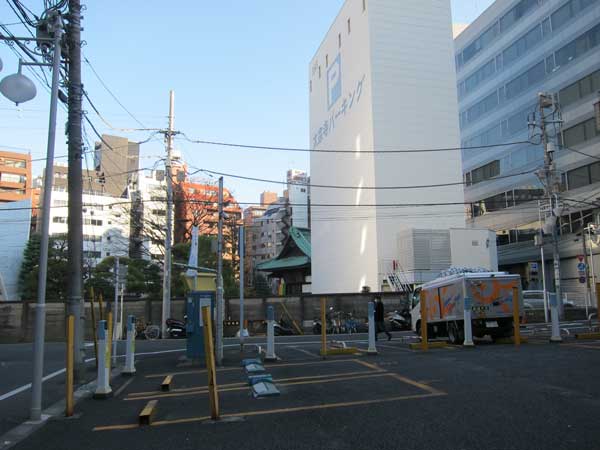
仮設の半永久的な駐車所はお寺やオフィスビルやマンションに囲まれています。高いエレベーターの駐車場はお寺の土地を使っているそうです。
In the foreground, there’s an automated surface parking lot on a lot that may get developed. The tall white structure is an elevated parking lot that is semi-permanent, and it appears to have been erected on the property of a fairly large temple and graveyard. On either side, offices and apartment buildings frame a dense and changing city.

お墓で、葉を落とした木がとても冬っぽいです。
This bare tree in a temple graveyard is very winter-like.

Visiting a nearby gallery, I wanted to show my friend the Gokokuji temple, just past the station. It was more magical and quiet than I had remembered. I love the long climb up the hill, and how the landscape frames the entrance gate, which in turn further frames the landscape.

植物は、人と自然よりも、人と人をつなげることが多いようです。 面白いですね。Twitterの@mygardeninjapanさん、アップルミントをありがとうございます。ベランダからベランダへ。
It’s funny how plants connect you even more with people than nature. Thank you Twitter’s @mygardeninjapan for this apple mint. From balcony to balcony!
I recently met up with Twitter’s @mygardeninjapan after exchanging many online comments and thoroughly enjoying his detailed documentation of his balcony garden in Yokohama. Along with @a_small_lab and Tokyo DIY Gardening‘s Chris, we had a bento lunch in a temple garden and then a fascinating walk around the Omotesando danchi.
It was very kind of @mygardeninjapan to give us these small wooden pots with mint plants from his garden and hand-made signs with illustrated care instructions. His ladybug logo reminds me of his blog story about his efforts to attract ladybugs to his balcony garden. I am looking forward to growing and eating this mint in my balcony.
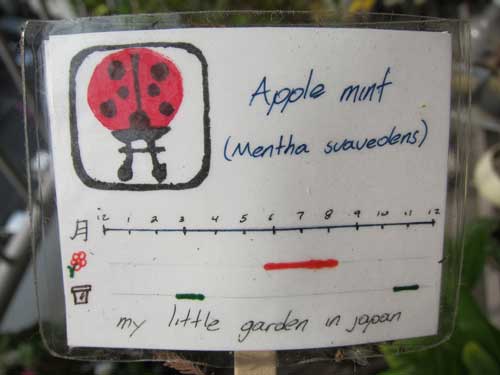

These photos were taken yesterday evening in Jiyuugaoka, an upscale neighborhood between Shibuya and Yokohama. I was leaving Sinajina, and crossed this beautiful pedestrian area full of benches, mature cherry trees and small shops. Like many neighborhoods, an old stream was converted decades ago into a pedestrian plaza. This one is particularly beautiful because it’s well used and central to the neighborhood that radiates out from the train station. They have also added lanterns for hanami.
When people think of hanami, or cherry blossom season, they talk about famous and gorgeous parks like Ueno, Inokashira Koen, and Yoyogi. What amazes me are the many neighborhood boulevards lined with beautifully maintained cherry trees, as well as shrines and public schools which often have at least one great tree. In my neighborhood of Nakano, there is Nakano Street, Araiyakushi Temple, and the elementary school near our apartment.
The magic of cherry blossoms is how diffused and ubiquitous they are. No matter where you go, you see the pink petals above you. It will be a glorious 10 days throughout the city.

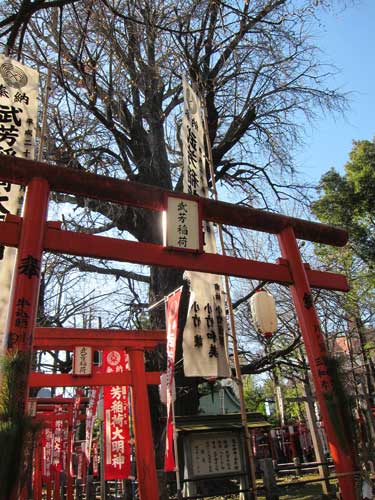
The end of Eri’s walking tour was the magnificent Kishibojin temple. The buildings are old, pre-dating the war and probably the 1923 Great Kanto earthquake, but most remarkable is a 30 meter high ginko tree with an 8 meter circumference said to be 600 years old. You can see it above surrounded on three sides by red gates.
Eri knows a lot about folklore, and explained that Kishibojin is a female diety who was originally a cannibalistic demon who repented and became a protector of children and women. She is known as Hariti in Sanskrit. In Japanese, the kanji for Kishibojin is a modified version of the character for “demon” (oni) missing a dot that symbolizes the horns that she lost during her conversion.
A famous street lined with Zelkova trees leads up to the temple.

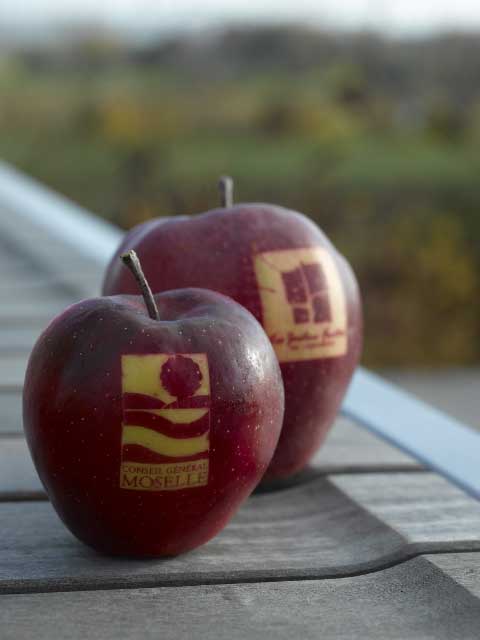
This week I was surprised to receive an invitation from Monsieur Pascal Garbe to speak about Tokyo Green Space at next year’s Gardens and Publics international conference in Metz, France. The conference is sponsored by the European Union and the Conseil Général de la Moselle.
Monsieur Garbe is the Director of Jardins Fruitiers de Laquenexy, a fruit tree garden that is over one hundred years old. Laquenexy has an apple exchange program with Hirosaki, Aomori, Japan’s largest apple producer in the North. Laquenexy is one of the few European growers skilled at “printing” messages on apples (as seen above). There is a great post that explains how it is done on the UK’s Royal Horticultural Society’s blog and Monsieur Garbe’s role in sharing this technique. Monsieur Garbe is also involved in a regional tourist cooperation network of gardens and horticultural producers spanning Frances’ Moselle department and neighboring provinces in Luxembourg and Germany.
A past speaker at the Jardins sans Limites conference is noted Japanese landscape designer and monk Shunmyo Masuno (枡野俊明) of Kenkoh-ji temple. I am humbled to present this research amidst leading garden designers, botanic garden directors, horticultural leaders, journalists and writers, and government officials.

Walking through Takanawa, I stumbled upon this magical temple entrance with a long winding path. Buddhist and Shinto temples are often the only dedicated land uses that escape the endless cycle of destruction and over-building that is so common in Tokyo. Few small temple gardens are this beautiful.
After passing these wooden guards, I saw only a stray cat. Not a single visitor or monk.
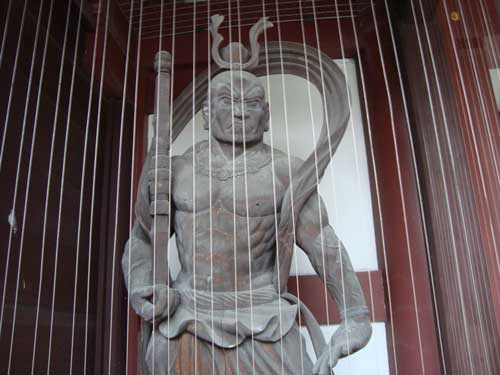
This is the path that invites one to find the temple.

Although a small total space, many angles make you feel that you have entered a splendidly edited jungle. I love the cloth apron on this statue.
